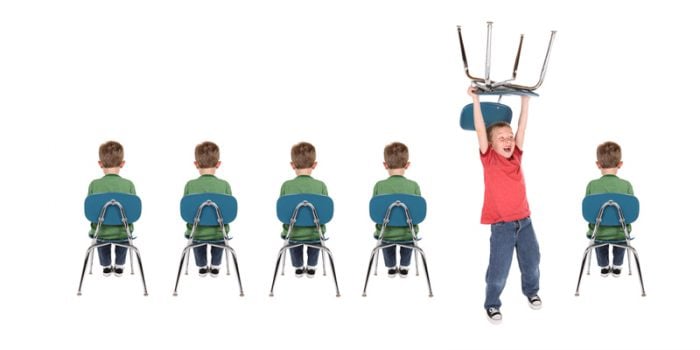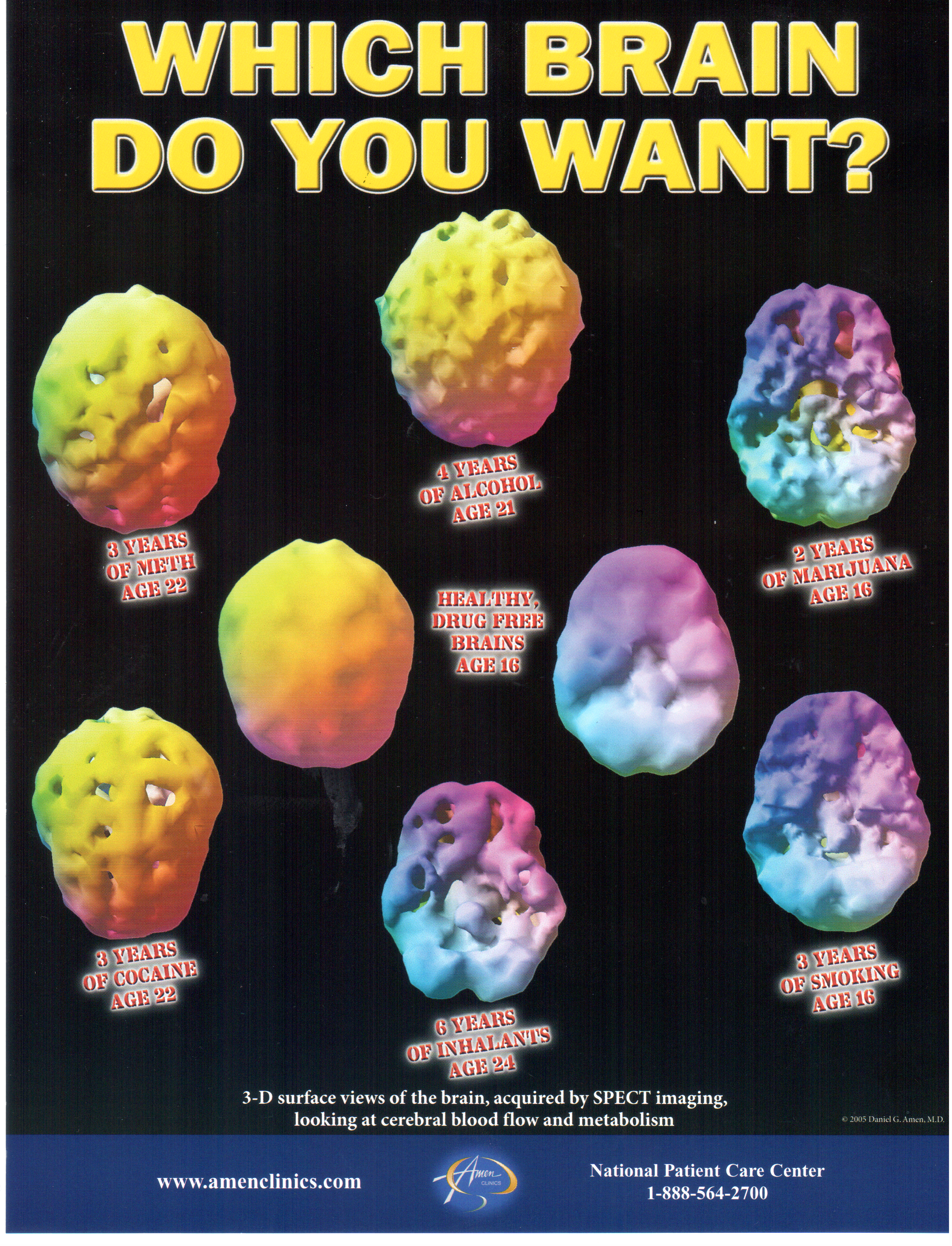
10 THINGS PARENTS SHOULD NEVER DO
Posted: May 2, 2019 8:50 am
If you love your children and want to help them grow into stable, thoughtful, productive, loving adults, here are 10 things you should avoid doing.
1. IGNORE THEIR BRAIN.
Their brain controls everything they do—how they think, how they behave, how they relate to others. When their brain works right, they work right. When they have trouble in their brain, they have trouble in their life. And if they have trouble in their life, you have trouble in your life. Leading edge brain imaging technology called SPECT shows the health of the brain. In the images below, you can see a healthy brain, a brain damaged by trauma (such as falling off a bike), and the brain of someone with ADD/ADHD. Seeing is believing. If you want your child to be their best, you have to take care of their brain and teach them how to do so.
Healthy SPECT Brain Scan: full, symmetrical activity

Head Trauma: damage to right frontal lobe

Classic ADD/ADHD: low activity in prefrontal cortex

2. RARELY SPEND QUALITY TIME WITH THEM.
Relationships require special time. The most effective exercise you can do is spend 20 minutes of quality time a day with your child—listening and doing something they want to do (within reason).
3. BE A POOR LISTENER.
When your kids are trying to talk to you, don’t speak over them. Learn to be an active listener. Let them say their piece and then repeat back what you heard so they know you have heard them.
4. USE NAME CALLING.
Don’t tell your child, “You’re a spoiled brat.” This is not helpful, and they will internalize these negative names and begin to believe them.
5. BE OVERLY PERMISSIVE.
Letting your child do whatever they want may make them “happy” in the moment, but it can be detrimental in the long run. Children need clear boundaries. Kids who have the most psychological problems usually have parents who didn’t set boundaries for them. Be firm and be kind.
6. FAIL TO SUPERVISE THEM.
The human brain’s frontal lobes—which are involved in planning, judgment, and impulse control—are not fully developed until about age 25. You need to be your children’s frontal lobes until theirs develop. This means checking in on what your kids are doing and with whom they are doing it. This doesn’t mean being a helicopter parent, it means you care.
7. DO AS I SAY, NOT AS A I DO.
If you’re a poor role model, your kids will pick up on that and follow your lead. If you say, “eat your vegetables” but you constantly snack on candy or potato chips, they will likely opt for the foods they see you eating.
8. ONLY NOTICE WHAT THEY DO WRONG.
Try to notice when your kids do things you like—cleaning up their room, finishing their homework, or brushing their teeth.
9. IGNORE THEIR MENTAL HEALTH ISSUES.
On average, it takes 11 years from the time kids develop symptoms of a mental health condition to first evaluation. This is just wrong. Struggling with symptoms of ADD/ADHD or anxiety and depression can negatively impact their ability to succeed in school, in their friendships, and in life.
10. IGNORE YOUR OWN MENTAL HEALTH.
If you are suffering from a mental health condition—whether it’s PTSD, bipolar disorder, or something else—it can devastate your children. Remember the saying, “Put your own oxygen mask on first.” You need to take care of yourself and be the best version of yourself to be the best parent.
At Amen Clinics, we have helped thousands of parents and children enhance their brain health and improve their performance at work, at school, and in relationships. If you or your child are struggling with a mental health issue or consequences of head trauma, schedule a visit or call 855-972-4857.

 ADD is the most common learning and behavior problem in children. But the issue doesn’t end there: It is also one of the most common problems in adults, and has been associated with serious problems in school, relationships, work, and families. Despite its prevalence, many myths and misconceptions about ADD abound in our society. Here are just a few of them:
ADD is the most common learning and behavior problem in children. But the issue doesn’t end there: It is also one of the most common problems in adults, and has been associated with serious problems in school, relationships, work, and families. Despite its prevalence, many myths and misconceptions about ADD abound in our society. Here are just a few of them:
